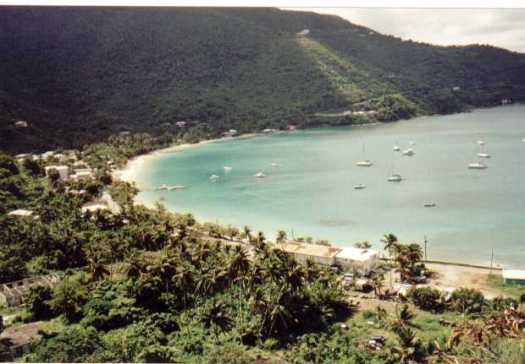I had been back in the UK for a couple of years, and had started my own consultancy. I had worked a few times in the Caribbean and helped an ex-NRI colleague with some work on rats in Africa. I had also started to work with a Kittitian called Edsel Daniel. Edsel had been a PhD student and when I was working for NRI, a friend in St Lucia, Keith Nichols, had put me in touch with him to give him some GIS advice for his thesis on modelling beach erosion in his home island. Edsel had worked for the Planning Department in St Kitts but had decided the world was bigger and had moved to the very reputable Vanderbilt University in Nashville Tennessee. We corresponded by email for several months and he sent me chapters of his thesis, which confused me greatly as it plotted its way through empirical and physical models of sand dynamics on Caribbean beaches – all I ever wanted to do was to lie on them.
While in BVI, I finally got to meet Edsel. I travelled over to St Kitts for a long weekend – it was only about 40 minutes flight from Tortola. He showed me the sights of this wonderful little nation, but also he discussed a lot of his ideas for GIS in small island nations. His ideas and mine tallied so closely that we thought we would either become deadly rivals or the greatest of friends. Since he was a lot larger than me, I decided it was in my interest to go for the latter.
We started to develop project ideas and came up with one for Anguilla that after I left BVI, we were able to develop and deliver. It concerned mapping coral reefs and other coastal resources of this little Overseas Territory. Edsel invited me over to Nashville to give a guest lecture to some of his students about our work, which I delivered then was able to stay over to celebrate the Thanksgiving weekend.
We met Edsel’s boss at Vanderbilt just before the holidays and started to talk about where the ideas for these GIS for small nations might go. I glibly reeled off a list of islands, mostly UK overseas territories as if they would all do our bidding and we had a career set up. As luck would have it, the conservation officer from the island Brendan had been waxing lyrical about, Ascension, emailed me while I was in Nashville and asked us to put together a proposal for just such work. Brendan had told this lady about our work in the Caribbean and she felt it was a good idea to have a similar system for Ascension. So during that Thanksgiving weekend, we sat around stuffing ourselves with roasted turkey sandwiches late into the night writing a proposal for two years of funding.

Edsel Daniel




